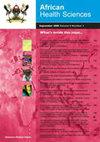不同保血技术在老年全髋关节置换术中的效果比较
IF 0.9
4区 医学
Q3 MEDICINE, GENERAL & INTERNAL
引用次数: 0
摘要
背景:探讨不同保血技术对老年全髋关节置换术(THA)患者术后凝血功能及预后的影响。方法:60例患者随机分为自体输血(ABT)组(n=30)和ANH组(n=30)。ABT组采用自体血液回收机对手术野血进行回收、清洗和过滤。急性等容血液稀释(ANH)组术前从中心静脉采血,放入柠檬酸抗凝血储存袋中,同时外周静脉注射等量的羟乙基淀粉稀释血液。两组患者在完成手术5个出血步骤后,均回输自体血。观察各组患者的临床指标。 结果:术后48 h, ANH组血红蛋白(Hb)水平升高,活化部分凝血活素时间(APTT)缩短,血小板活化因子CD62P表达率低于ABT组;结论:与ABT组相比,ANH组血红蛋白含量较高,血小板活化因子(Plt)产生较少,但在缩短住院时间方面差异无统计学意义。关键词:髋关节置换术;输血;自体;血液稀释;输注红细胞;血小板活化因子。本文章由计算机程序翻译,如有差异,请以英文原文为准。
Comparison of the effects of different blood conservation techniques in elderly patients undergoing total hip arthroplasty
Background: To probe into the influences of different blood conservation techniques on the postoperative coagulation function and prognosis of elderly patients receiving Total Hip Arthroplasty (THA).
Methodology: A total of 60 patients were randomly divided into Autologous Blood Transfusion (ABT) group (n=30) and ANH group (n=30). For patients in the ABT group, an autologous blood recovery machine was used to recover, wash and filter the surgical field blood. For those in the Acute Isovolumic Hemodilution (ANH) group, blood was collected preoperatively from the central vein and stored in a citrate anticoagulant blood storage bag, while the same amount of hydroxyethyl starch was injected into the peripheral vein to dilute the blood. After Mai bleeding steps of the operation were completed, the autologous blood of patients was transfused back in both groups. The clinical indicators of patients in each group were observed.
Results: 48 h after operation, the ANH group obtained a higher level of hemoglobin (Hb), shorter Activated Partial Thromboplastin Time (APTT), and a lower expression rate of platelet activating factor CD62P than the ABT group.
Conclusion: The ANH group exhibits higher content of hemoglobin and fewer platelet (Plt)activating factors produced than the ABT group, while no significant difference in the shortened length of hospital stays is found.
Keywords: Hip arthroplasty; blood transfusion; autologous; hemodilution; transfusion of red blood cells; platelet activating factors.
求助全文
通过发布文献求助,成功后即可免费获取论文全文。
去求助
来源期刊

African Health Sciences
MEDICINE, GENERAL & INTERNAL-
CiteScore
2.30
自引率
0.00%
发文量
179
审稿时长
>12 weeks
期刊介绍:
The African Health Sciences is an internationally refereed journal publishing original articles on research, clinical practice, public health, policy, planning, implementation and evaluation, in the health and related sciences relevant to Africa and the tropics. Its objectives are to: Advocate for and promote the growth of reading culture in sub Saharan Africa; Provide a high quality journal in which health and policy and other researchers and practitioners in the region can and world wide, can publish their work; Promote relevant health system research and publication in the region including alternative means of health care financing, the burden of and solution of health problems in marginalized urban and rural communities amongst the displaced and others affected by conflict; Promote research and the systematic collection and collation and publication of data on diseases and conditions of equity and influence; Promote development of evidence-based policies and guidelines for clinical, public health and other practitioners. African Health Sciences acknowledges support provided by the African Health Journals Partnership Project that is funded by the US National Institutes of Health (through the National Library of Medicine and the Fogarty International Center) and facilitated by the Council of Science Editors.
 求助内容:
求助内容: 应助结果提醒方式:
应助结果提醒方式:


